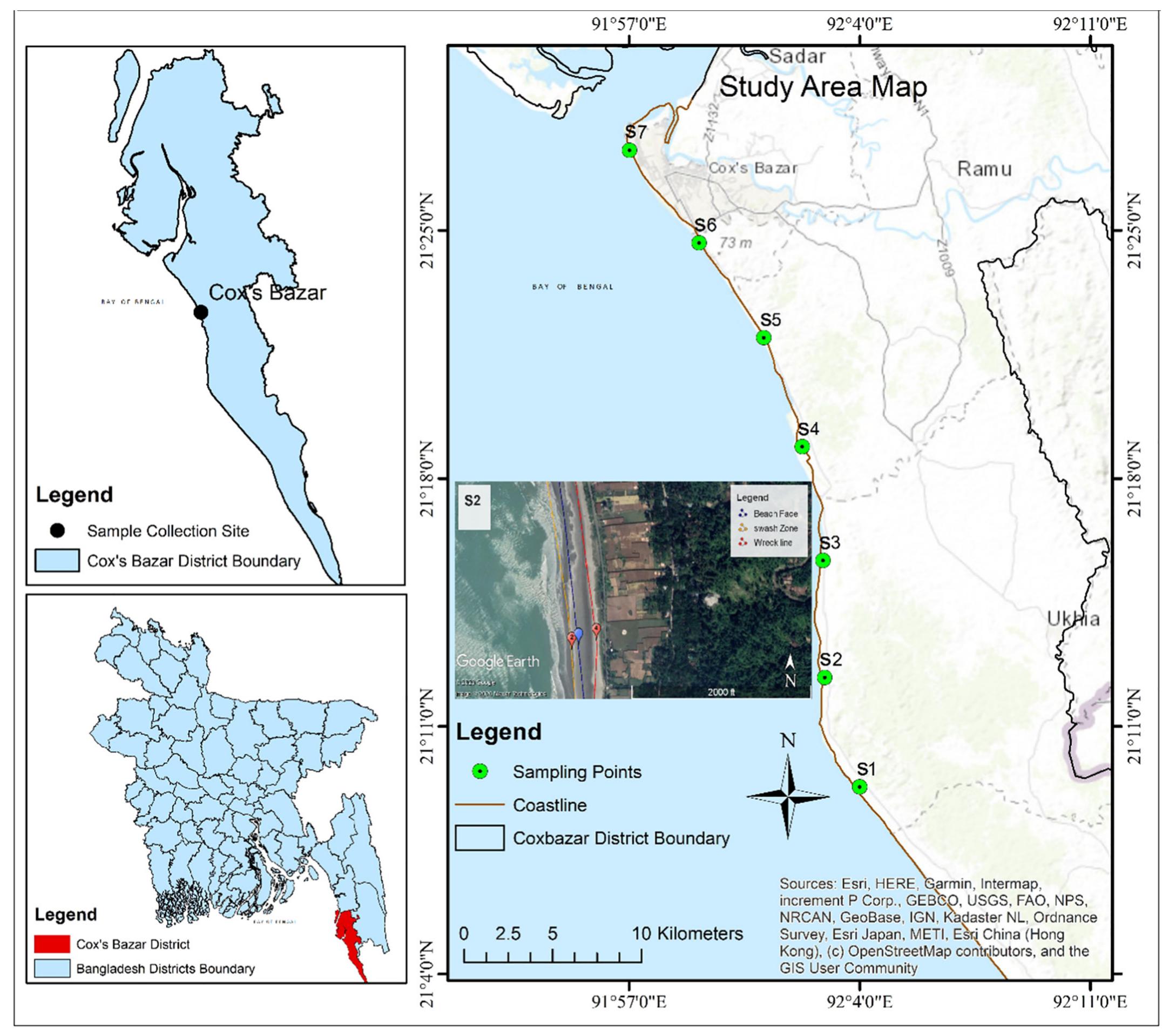Figure 2 – uploaded by Rouhollah Zare

Figure 2 The numerical abundance of MPs found in analyzed sediment. The bar represents the total plastic as well as the contributing amount of each size class it several particles per kilogram. The number of microplastics observed at different sample sites was presented in Fig. 2. MPs were found in every site though all the col- lected samples did not contain MPs. The highest number of MPs was found in S6, and the lowest number was found in S7. Such variations in the abundance of MPs in those locations may be due to the degree of disturbances received by each particular site (Tiwari et al., 2019). The mean abundance of plastics in our study site was found to be 8.1 + 2.9 particles kg~‘. The number of microplastic observed at the different beaches in the world varies from a few particles to hundreds of particles per kilogram. The mean MPs in the beach sediments in our Microscopic examination reveals that the plastic particles were present in different shapes, sizes, and colors in all sediments (Fig. 3A-C). In terms of shape, most of the particles are found irregulat shaped and are classified into five categories: fragments, fibers, foams, beads, and films. Fragments were the most abundant shape found on the sampling sites (total 22 particles), which, together with foams (5 particles), comprised 79% of all found microplastic (Fig. 3A). As to the rest, fibers, beads, and films are less represented categories found in the sample. Again, fragments were found in every site. The result of out







